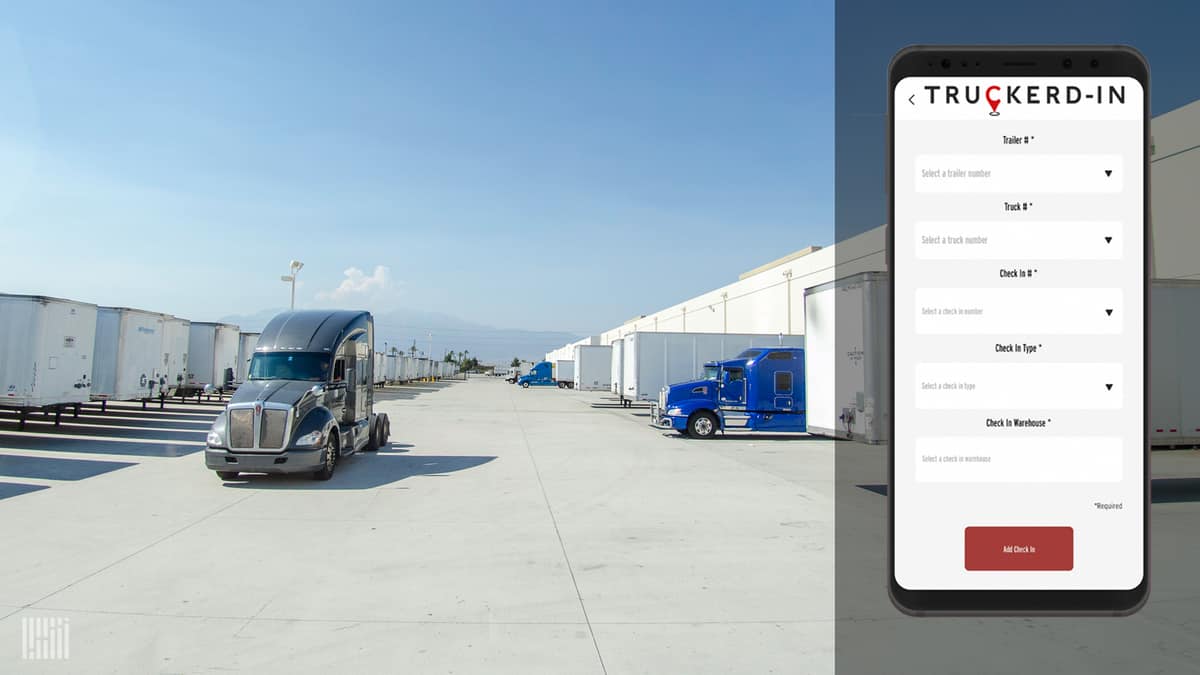Drivers have been subjected to long lines and imposing wait times at warehouses for decades. It is not uncommon for drivers to spend several hours waiting to load or unload, eating into their 14-hour clocks and threatening carriers’ bottom lines.
Shippers worked to shave time off their check-in processes — with many instituting appointment windows — during the 2018 capacity crunch. Since then, however, the race to become a “shipper of choice” has cooled. Shippers regained the upper hand when capacity surged past volumes in 2019. At the same time, wait times crept back up.
According to FreightWaves SONAR (WAIT), drivers spent 134 minutes, on average, inside a shipper’s facility waiting to load or unload their trucks in April 2019. By November 2019, the number had climbed to 158 minutes. While average wait times seasonally drop in January due to lower market capacity, numbers remain higher than those seen throughout much of 2018.
With average wait times clocking in well over two hours, drivers can save significant amounts of time and money by using digital tools to streamline the check-in process.
One company, Truckerd-In, strives to save drivers hours of needless hassle by making instantaneous check-ins the industry standard. The company’s mobile application allows drivers to check in at warehouses from the comfort of their trucks via geofencing technology.
“The innovations in trucking technology have been to regulate truckers, not to solve their problems,” Truckerd-In Co-founder Eli Soler said. “Drivers will spend an hour to an hour and a half just at the check-in process.”
Truckerd-In’s patent-pending technology for managing shipping processes and personnel is designed to help usher the trucking industry into the 21st century. In addition to letting drivers digitally check-in at warehouses, the app is equipped with tools to encourage driver safety and minimize delays.
“Truckerd-In is the solution to the big problem, which is time,” Soler said. “Nobody has time.”
Soler noted that painfully long wait times are often just the beginning of the problems drivers face at check-in. Since trucking attracts individuals of all backgrounds, unforeseen language barriers can pop up at key points in the supply chain. Soler wants Truckerd-In to be an easy communications platform that anyone can use regardless of language.
Truckerd-In eliminates the need for verbal check-ins, as well as in-person rendezvous to deliver messages, which can be a liability to truckers unfamiliar with a warehouse’s layout. With the app’s chat feature, drivers and warehouse staff can communicate instantly to ensure both parties are on the same page.
“We did it for the truckers. They are the blood of the transportation community,” Soler said. “Truckers are the ‘old cowboys’ of the United States. Everything you move or touch has been moved by a trucker.”
According to Soler, some warehouse employees treat truckers poorly because on-site staff and drivers struggle daily to balance tight deadlines and freight movements. Meetings between the parties can result in even more frustration and stress. Truckerd-In’s streamlined communication platform puts everyone on the same page so there are no surprises at the gate.
Along with its advanced communication system, Truckerd-In’s warehouse platform assigns drivers a loading door and verifies licenses and pickup details. Having this information readily available, warehouses can easily authenticate and approve any driver who requests a check-in. Access to real-time information will help prevent common problems such as unauthorized double-brokering.
Truckerd-In’s Driver Authentication Process provides detailed information such as driver and truck images, driver information and trailer numbers to ensure the process is transparent throughout. All parties involved will have this information to track every step in the shipping process, including the U.S. Department of Transportation (DOT). Truckerd-In looks to crack down on cargo theft by granting DOT officials access to scan plates and trailer numbers to collect critical information without having to stop trucks individually.
The mobile app also gives drivers the ability to automatically e-sign load documents from behind the wheel. Documents such as bills of lading, packing lists, lumper receipts and proof of delivery are stored within the app.
“We’re saving drivers thousands of dollars in time, traffic and paper. An hour and a half means a lot for a driver looking to get some rest. It means a lot for a driver looking to get to the truck stop or appointment on time without violating his/her logbook Hours of Service,” Soler said.












